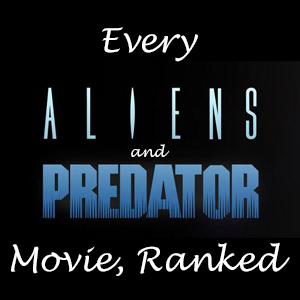Michael Crichton left us with one last grand mystery upon his passing. We know he wrote “over a third” of “Micro” (2011) before he died, according to his official website. But how much of the finished product has his DNA, and how much is that of Richard Preston, who completed the novel from Crichton’s notes and research materials?
Presumably Crichton wrote the first third – the section called “Tensor” – and Preston wrote the other two sections – “A Band of Humans” and “Tantalus.” Interviews with Preston reveal that Crichton’s notes didn’t include his planned ending, but Preston tried to guess where the author was headed.
Similarly, he tried to suppress his writing style and mimic the original author’s; Crichton’s wife and secretary helped him with this in the editing process. That having been said, Preston (“The Hot Zone”) is himself known for hard SF, so his voice is inevitably in there.

“Micro” (2011)
Authors: Michael Crichton and Richard Preston
Genre: Science fiction
Settings: Boston; Oahu
In the end, I label “Micro” as “Crichton Lite.” If this book didn’t have Crichton’s name on it, I’d think it was a brilliant concept that’s consistently entertaining, but that falls short of Crichton’s usual level. Crichton was a master at ratcheting the global and historical stakes by blending fascinating science history and breakthroughs (and charts and graphics) into the adventure.
To his credit, Preston keeps us marveling at the rules of the microbiological world; by no means does he go full Jules Verne, scrapping hard science. But something is missing: In most Crichton works, I get a sense that what we’re learning matters on a wider level. That’s not the case in “Micro.”
Pseudo-science leads to hard science
“Micro” bears similarities to “Jurassic Park” and “Timeline”: Environments separated by basic rules of reality are suddenly, incongruously, thrown together. Also like those books, Crichton uses more pseudo-science than he’d probably prefer to get the premise up and running. But once he has combined the worlds – humans and dinosaurs, modern and medieval humans, humans and the insect world – he does embrace grounded scientific theory.
“Micro” isn’t the first story to shrink humans; there’s a whole series of “Honey, I Shrunk the Kids” movies, after all. But when Crichton (and Preston) does it, he’s showing us what it might really be like. When these eight micro-humans fall from heights, they can glide and bounce; they don’t get hurt, because of how their light weight compares to the heavy air pressure.
On the other hand, ants are monstrously strong and dangerous. Preston (assuming the last two thirds are his) uses the phrase “strong as an ant” – the micro-world’s “strong as an ox” – and it’s no joke. We’re introduced to the ants when a group of them literally rips apart a poor Nanigen worker who has been shrunk along with seven Boston grad students.

Rules of survival are different if we are shrunk to half an inch. For example, at full size, we build fires when we are camping to ward off animals. At micro size, the characters have to stay in the dark at night, lest they attract predators.
Working from notes
Crichton’s website includes a handwritten page listing his planned action sequences, and Preston includes most of them: attacks by a snake (in a Nanigen cage, as the later action takes place in a Hawaiian pocket rainforest, and Hawaii has no snakes), spiders, myna birds, wasps and beetles. The notes call for a frog with a sharp tongue, but Preston doesn’t work this in.
Someone who has read Preston’s catalog can tell me if I’m right or wrong, but I sense that he’s an adventure writer above all whereas Crichton is foremost a techno-thriller writer. “Micro” does give us a sharp picture of the micro-world, how it has beauty and horror that makes it alien to a human perspective, even though it’s all around us every day.
But it’s actually the novel’s more familiar issues – pharma companies’ plundering of nature for medicines, along with corporate espionage and big-time government weapons contracts – where a central point coalesces. When money is on the line, horrific acts can be committed by powerful people, “Micro” reminds us.
It’s not an original point, even among Crichton’s catalog: He explored miniaturized, weaponized tech in “Prey,” and the manipulation and patenting of small structures (genes) in “Next.” It’s easy to mix up these three novels if you haven’t recently read them, or if you merely skim the descriptions.
Amusing characters
As an investigation yarn, “Micro” is rather shallow. Preston writes sociopathic Nanigen leader Vin Drake as ultimately hapless. The success of his cover-up depends on the authorities not discovering the shrinking tech. Once the detective is willing to follow the clues (despite their bizarre nature), the trail of evidence is blatant.
Drake’s failure to kill the micro-humans is ridiculous, but I went with it because I wanted the students to survive, return to normal size, and get revenge. In this regard, the ending is entertaining, capped by a satisfying scene of comeuppance for Drake.
In addition to writing good adventure sequences, Preston is a solid character writer. The progression is obvious, yet I found it cute how Rick’s and Karen’s mutual hate turns to love over the course of saving each other’s lives and being in constant peril. Self-interested coward Danny is amusing. And Preston surprised me when two seemingly major players are killed off. The roster depth is such that I kept right on turning the pages.
As an adventure novel that’s a fun way to absorb some biology knowledge, “Micro” succeeds. As a techno-thriller, it’s not up to Crichton’s established scale.

